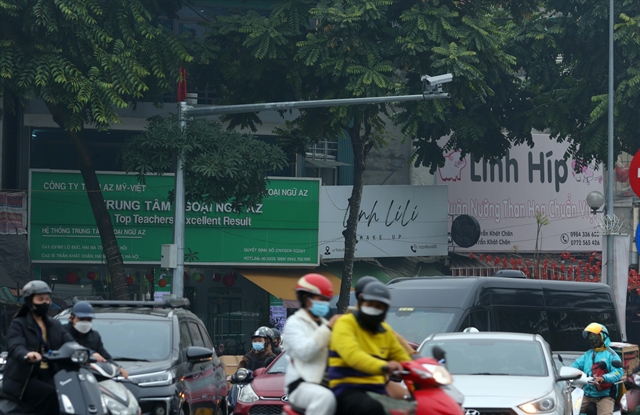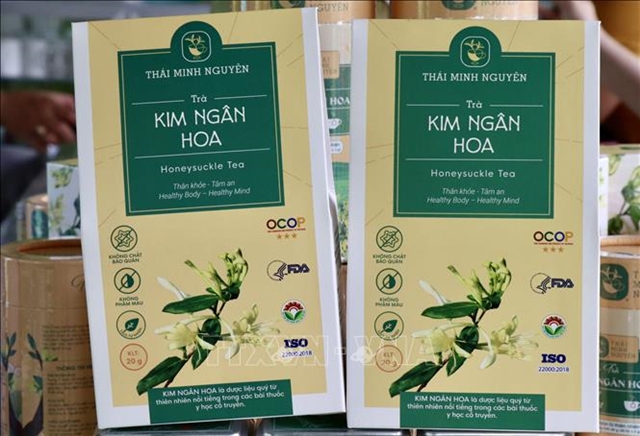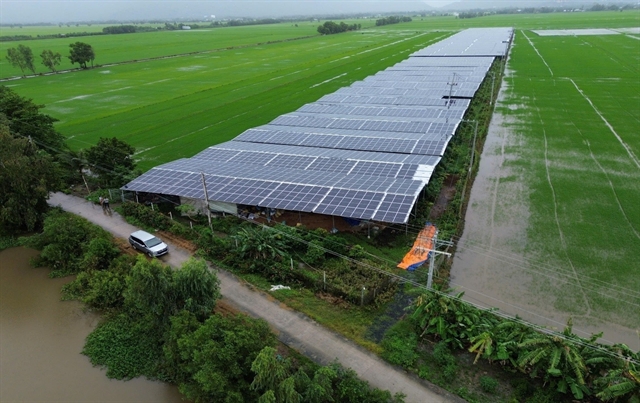 Society
Society


|
| A farmer in An Giang Province harvests honeysuckle flowers to produce herbal tea. — VNA/VNS Photo Thanh Sang |
AN GIANG — An Giang Province is developing medicinal plant cultivation, combining conservation efforts with green livelihoods and value chains.
With more than 96,800ha of forest and forestry land, the Cửu Long (Mekong) Delta province is home to a rich and diverse plant ecosystem, especially medicinal plants.
In addition, it is known as a province with diverse ethnic and religious communities, all sharing a strong tradition of caring for people's wellbeing and practising charity. This has contributed significantly to the development of the province’s traditional medicine.
As a result, the province has developed various models for the cultivation, harvesting, and post-harvest processing of medicinal plants, with a total area of 322ha.
These include 250ha of agarwood trees in Cấm Mountain in Ba Chúc Commune, 12ha of spiny bitter gourd in Vĩnh Gia Commune and 10ha of periwinkle in Bình Thạnh Đông Commune.
The province’s Oriental Traditional Medicine Association has 61ha for growing various key medicinal plants used in treatments and to support public health.
The association operates a widespread network across the province, with many traditional medicine centres, most notably the province’s Traditional Medicine and Rehabilitation General Hospital.
The province aims to build a medicinal plant ecosystem in the Bảy Núi (Seven Mountains) region, aligning with forest protection, tourism development, and sustainable economic development.
Trương Minh Hùng, deputy head of the province’s Forest Protection Sub-Department, said: “Rare medicinal plants such as đương quy nhật (Angelica acutiloba), hà thủ ô đỏ (Fallopia multiflora), cà gai leo (Solanum procumbens), xạ đen (Celastrus hindsii), and dandelion are currently being acclimatised and tested for cultivation. This effort helps conserve valuable genetic resources and reduce pressure on wild harvesting.”
“Several endemic plant species are also being preserved and sustainably harvested,” he said.
The province is leveraging the mountainous terrain of the Bảy Núi region to grow medicinal plants sustainably. Species such as honeysuckle are being cultivated and processed into herbal tea products.
Agarwood trees are grown primarily in the Dài Mountain, which is one of the Bảy Núi (Seven Mountains), supplying raw materials for three local incense-making facilities and markets inside and outside the province.
The Bảy Núi region has favourable natural conditions, including a distinct climate, hilly terrain, and diverse soil types, making it highly suitable for the sustainable cultivation of valuable medicinal plants.
The region is renowned for its sacred pagodas and majestic natural landscapes and attracts large numbers of visitors and Buddhist pilgrims.
The province has documented about 1,083 species of medicinal plants, many of which are rare and valuable for producing pharmaceuticals and functional foods.

|
| Honeysuckle tea produced by Thái Minh Nguyên Service – Trading One Member Limited Company in An Giang Province’s Chợ Mới Commune has been certified as a 3-star product under the country’s “One Commune – One Product” programme. — VNA/VNS Photo Thanh Sang |
Effective cultivating models
An Giang has developed several successful medicinal plant cultivation models.
One model is the cultivation of chùm ngây (Moringa oleifera), a tree that is rich in healthy antioxidants, in the Bảy Núi region. This plant is increasingly grown for both medicinal and nutritional purposes in Việt Nam.
Agroforestry models linked to eco-tourism are developed in the Bảy Núi region, which grow various medicinal plants such as honeysuckle and sâm cau (Curculigo orchioides).
Vũ Minh Tú of Chợ Mới Commune grows 1ha of honeysuckle and uses natural farming methods without chemical fertilisers.
The fresh flowers fetch around VNĐ150,000 (US$5.7) per kilogramme due to their high quality, he said.
In Ba Chúc Commune, many farmers intercrop medicinal plants in fruit orchards to increase their income.
Lê Minh Tuấn, who intercrops Siamese turmeric, Thai turmeric and aromatic ginger in a 2ha mango orchard in Ba Chúc, said: “My family harvests about two tonnes of turmeric and aromatic ginger each year.
Intercropping medicinal plants in the fruit orchard has brought us nearly VNĐ100 million ($3,800) annually.”
Châu Thị Nương grows termite mushrooms and linhzhi, a medicinal mushroom, in her 1.5ha high-tech farm in Cô Tô Commune and produces 2–3 tonnes of mushrooms monthly.
She earns annual revenue of VNĐ800–900 million ($30,600-34,400) and employs more than 30 workers, she said.

|
| Châu Thị Nương’s high-tech mushroom farm grows termite mushrooms and linhzhi, a medicinal mushroom, in An Giang Province’s Cô Tô Commune. — VNA/VNS Photo Thanh Liêm |
The province has about 15 herbal tea products certified with three stars or higher under the country’s “One Commune – One Product” (OCOP) programme.
To develop the medicinal plant sector sustainably, An Giang will step up investment in processing facilities, building modern factories, a medicinal plant museum, and wellness resorts, according to the provincial People’s Committee.
It will prioritise granting production codes for growing areas, brand building, OCOP product development, geographical indication registration, and enhancing co-operation with institutes and universities such as Cần Thơ University.
It will expand international co-operation and standardise production processes to serve both domestic and export markets. — VNS




